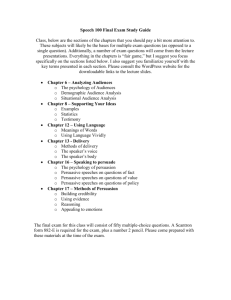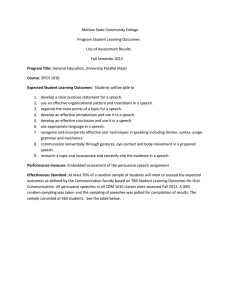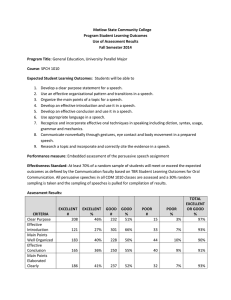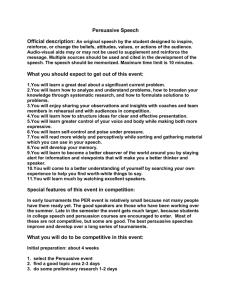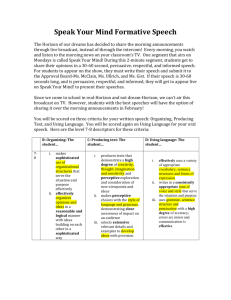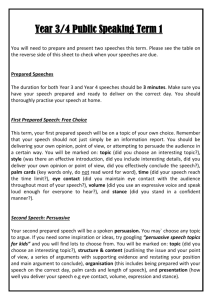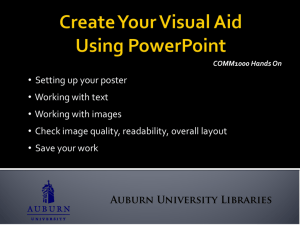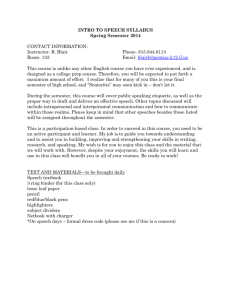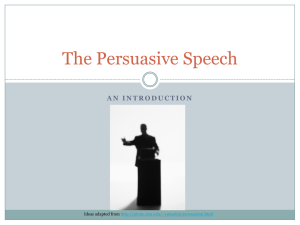Semester Test Speech Study Guide
advertisement
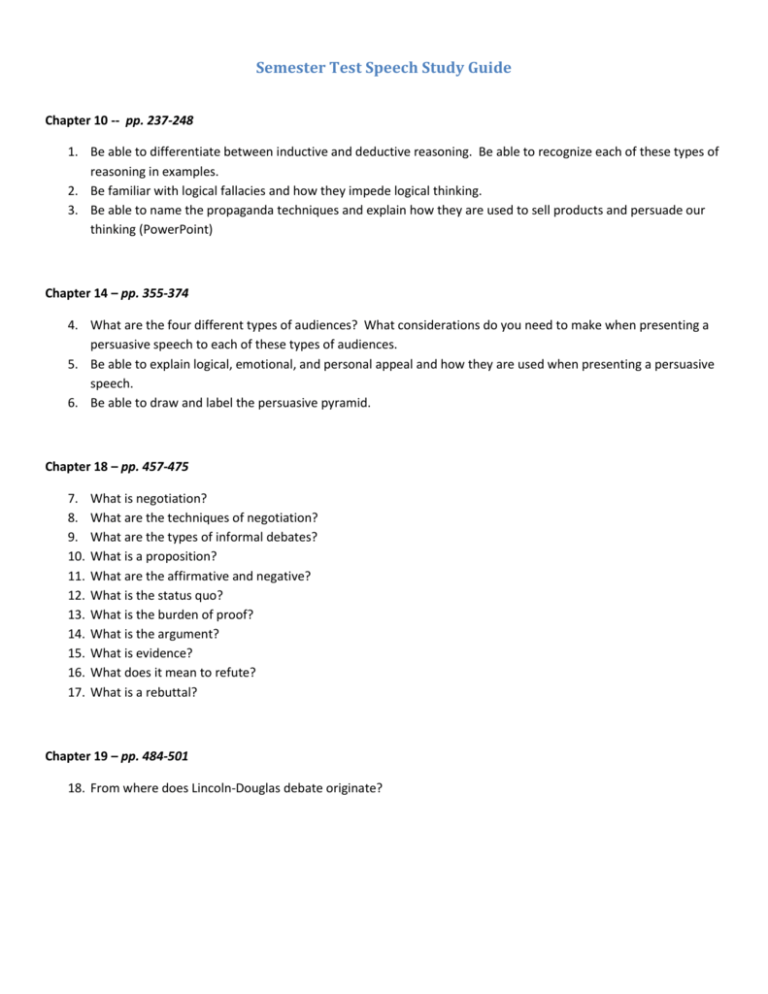
Semester Test Speech Study Guide Chapter 10 -- pp. 237-248 1. Be able to differentiate between inductive and deductive reasoning. Be able to recognize each of these types of reasoning in examples. 2. Be familiar with logical fallacies and how they impede logical thinking. 3. Be able to name the propaganda techniques and explain how they are used to sell products and persuade our thinking (PowerPoint) Chapter 14 – pp. 355-374 4. What are the four different types of audiences? What considerations do you need to make when presenting a persuasive speech to each of these types of audiences. 5. Be able to explain logical, emotional, and personal appeal and how they are used when presenting a persuasive speech. 6. Be able to draw and label the persuasive pyramid. Chapter 18 – pp. 457-475 7. 8. 9. 10. 11. 12. 13. 14. 15. 16. 17. What is negotiation? What are the techniques of negotiation? What are the types of informal debates? What is a proposition? What are the affirmative and negative? What is the status quo? What is the burden of proof? What is the argument? What is evidence? What does it mean to refute? What is a rebuttal? Chapter 19 – pp. 484-501 18. From where does Lincoln-Douglas debate originate? Short Answer/Essay Questions from Previous Units Chapter 1 – Building Responsibility (pp. 3-21) Be able to define and explain ethics in the school setting. Be able to draw and label the communication process. Be able to define the terms: sender, receiver, message, feedback, channel, and interference. Be able to define and explain stereotypes. Chapter 2 – Building Confidence (pp. 24-47) Explain why having a positive self-perception plays a role in effective communication. How do self-confidence and self-esteem influence one’s speaking abilities? Chapter 3 – Listening (pp. 53-73) What are the three parts that you can break every speech into? What should you look for in each of these parts? What strategies can you use to become a better listener? Chapter 4 – Nonverbal Communication (pp. 76-95) Be able to explain how gestures and touch can differ between cultures. Be able to define personal space and explain how that space can differ between individuals and cultures. Chapter 9 – Organizing Your Speech pp. 205-231 Chapter 13 – Speeches to Inform pp. 321-349 Chapter 17, Section 2 – Ceremonial Speeches 438-447 Each speech should be guided by one sentence that guides the rest of the speech this is called the ______________ ______________. Where is the thesis statement usually found? What are 5 attention-grabbing strategies? What are the three parts of the introduction? Every speech needs to include how many major points? What are the three things that can support a sub-point in your speech? What should you be sure that your conclusion contains? What is a possible disadvantage of using a multimedia visual aides? What is an advantage of using a computer-based visual aid? Be able to draw the journalistic pyramid.
